These Women Muralists Are Sparking a Social Dialogue in Cities Around the World
Mural painting is one of the oldest and more artistic forms of persuasive communication that we have on this planet.
The craft dates back, as far as we know, some 30,000 years to primitive cave illustrations in France, the elaborate tombs of Egyptian pharaohs, and the homes of wealthy senators in balmy Pompeii. The art was elevated again throughout Italy during the Renaissance and modernized over the last century with the invention of new and advanced oil and water-based paints.
Related: Abu Dhabi’s Floating Louvre Museum Is Finally Opening
Murals are as much aesthetic improvements to public spaces as they are tools for communicating a political goal or some form of social emancipation. The Mexican mural movement of the 1930s comes to mind, led by male artists like Diego Rivera and José Orozco.
More recently, women artists are creating artwork that stand up to the longstanding and unequal treatment of their gender, painting murals across the globe that call attention to the misogyny, sexual abuse and a mile-long list of misunderstanding and injustices that they’ve experienced by men.
Among them is the Rome-based artist, C. Finley, who this October painted the “Divine Feminine,” a 100- by 150-foot color bomb of a mural on the entire side of a seven-story residential building in downtown Los Angeles. In light of recent revelations of the director Harvey Wienstien’s disturbing decades of sexual abuse and misconduct, and President Donald Trump’s track record of boorish misogyny, Finley wanted to create a mural that celebrated women feeling their power and coming out of the shadows.

The artist says the new work is a sort of talisman and encouragement for women and men to feel the power, joy and rapture of the divine feminine rising up: “I have a strong desire to feminize spaces, through wallpapering dumpsters, mandalas made of jewelry, or creating the Whitney Houston Biennial, a platform for hundreds of women and is a response to the awakening representation of women artists in major museums and galleries.”
During the project, for which she used wonky cranes and over 80 gallons of paint, the artist and her team were met by locals and onlookers with joy and love, she says. An inspiring indication that using mural art to celebrate women’s bodies and the important matters that affect us all, is a powerful instrument for change.
Natalie Frank and Zoe Buckman, New York City and London-based artists, teamed up with New York Live Arts, the artistic home of the dancer and choreographer Bill T. Jones, to paint a mural for their 32-foot lobby wall. Past artists like Kiki Smith painted the lobby’s wall. The duo began the mural shortly before the 2017 presidential inauguration, working with designer Marian Bantjes to complete the work on a giant vinyl adhesive that could easily peel on and off the wall like a big sticker.
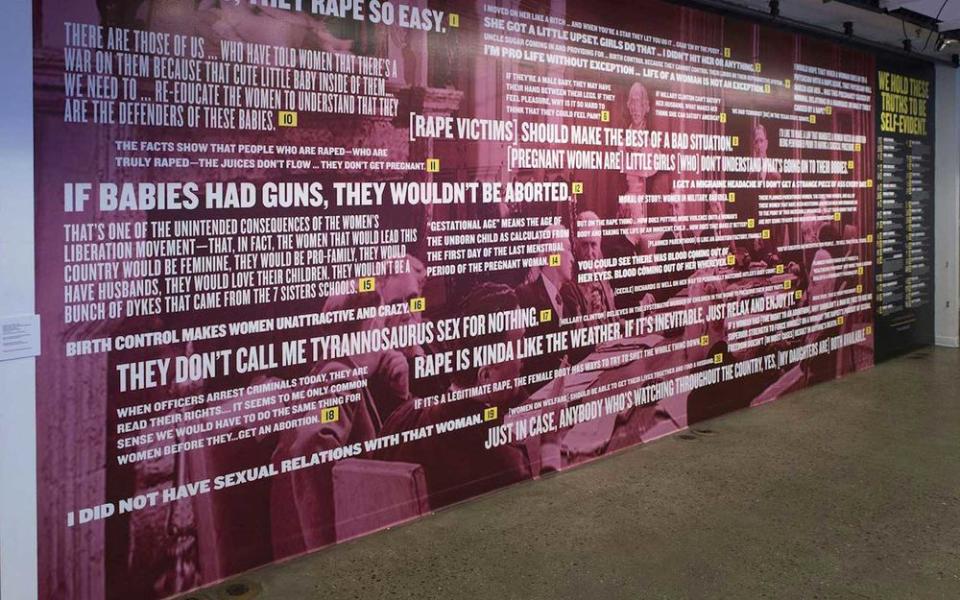
Frank says that she worked with unsanitized fairy tales and a scholar, Jack Zipes, over the past five years, making books and drawings that recast the feminist roots of women's oral tales, which she believe is the origin of all fairy tales. The artists created a mural highlighted what Frank calls the “pussy language” that was ushered in as permissible under then republican candidate Donald Trump, and forever humming in the background long before him.
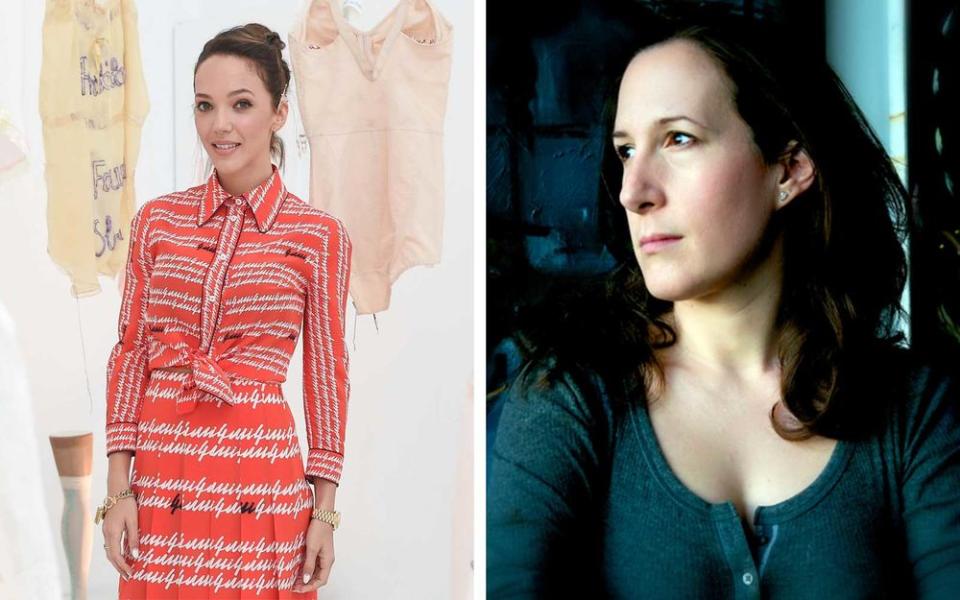
They painted quotes by misogynist politicians, such as Steve Bannon who is quoted saying, “That's one of the unintended consequences of the women's liberation movement — that, in fact, the women that would lead this country would be feminine, they would be pro-family, they would have husbands, they would love their children. They wouldn’t be a bunch of dykes that came from the 7 Sisters schools.” Or Todd Akin’s foolhardy understanding of female anatomy when he said, “If it’s a legitimate rape, the female body has ways to try to shut the whole thing down.” The point of the mural was to highlight how women, especially women’s bodies, are misunderstood, mistreated and controlled; and to call out misogynist’s hollow wisdom.
Aiko Nakagawa's murals are almost like detailed studies of the locations where she paints them. She prefers to research the social, historical, cultural and architectural aspects of a place before she begins to sketch, create stencils and gather spray paints for a project. The New York City-based artist creates murals all over the world, in places like Kyoto, Japan, Roskilde, Denmark; and Coney Island in New York.
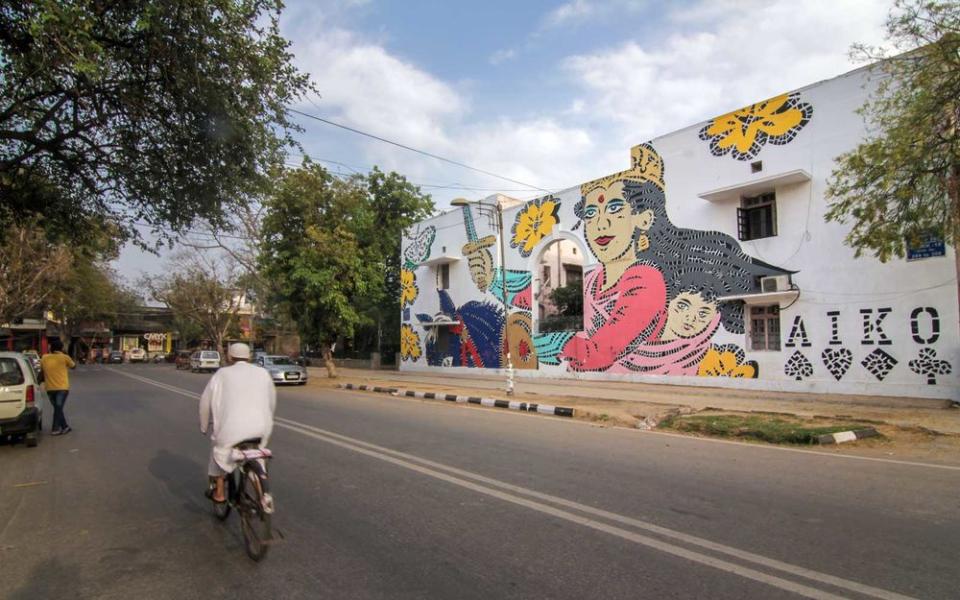
Growing up in Japan, she felt that it was difficult for women to survive freely in society, particularly if they are artists. When she moved to New York City, she recalls spending most of her time with young American graffiti artists, and being the only woman.
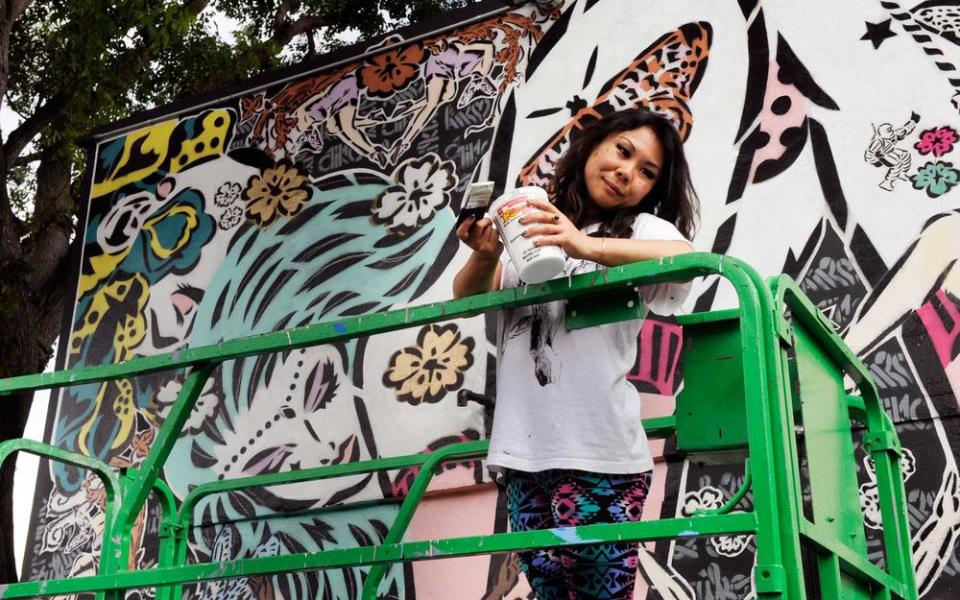
For that reason it seemed almost intuitive for her to celebrate women and draw attention to inequality. She prefers to celebrate the positive side of sexuality in her work, which can also be found at places like the Museum of Sex in Manhattan. The Japan Foundation sponsored her in 2015 to paint a mural in New Delhi, India, where she painted Queen Lakshmibia, one of the bravest soldiers in Indian history. Nakagawa says that while working with local New Delhi volunteers, she produced a powerful image of the historical hero, and made a statement about rampant violence against women, which is a critical problem in India.
Toronto, Canada, is home to the artist, Emily May Rose, whose latest mural was part of this year’s Women Paint, a laneway production that the city funded that featured all women-identifying artists.
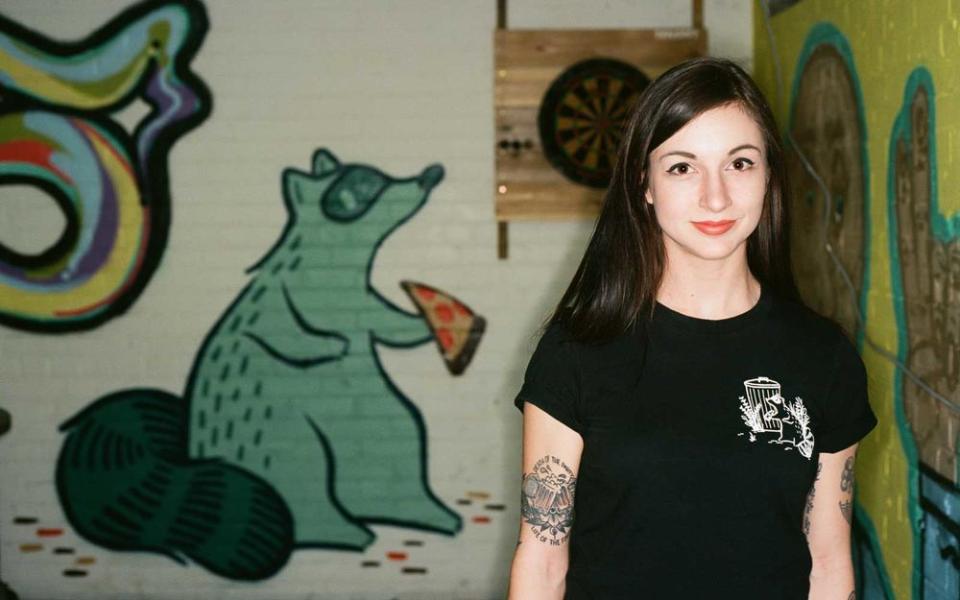
She worked with more than 20 women artists to paint a Toronto alley, each creating murals focusing on feminism and celebrating inspiring women. Rose says she wanted to strike a conversation about women being more involved in the male-dominated world of murals and street art. Her murals are personal and comical, personifying animals and staging them in nostalgic or familiar scenes.
Locals assumed she was a male artist before she started tagging her name on her murals. Nearly every time she worked on a mural, people commented something along the lines of “I thought only guys did that,” which she says never surprised her, as the mural art world has always been a boys club. She says that while many of the themes of her murals don't outright tackle political issues, the fact that she’s out there unapologetically making work as a female artist does.
In Spain, Julieta XLF (her work pictured above) believes that color is nothing else but joy, and by painting vibrant murals, she effectively reminds the public that women are the protagonists of their own adventures rather than the property of a male-dominated society.
Her motifs are inspired by the beauty of nature and the enlightenment that comes from traveling and experiencing different cultures. She even says that her ‘condition’ of being a women not only informs the way that she paints, but the way that she confronts every day issues.
She didn’t begin painting murals with this in mind, though overtime she realized that, without literally writing on the wall about misogyny and inequality, she couldn’t reflect on the environment, the cities and spaces that we inhabit, and hopefully bring people back down to earth about what we have in common. Julieta’s mural work not only celebrates the spirit of women, it is a way to unify and impact the lives of people who wish to observe.

